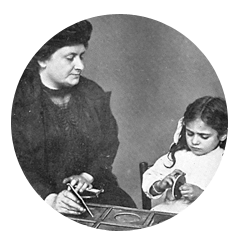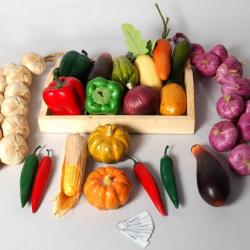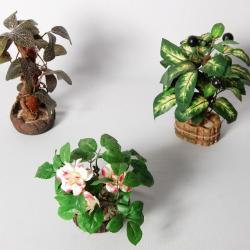What matters is not physics, or botany, or the works of the hand, but the will and the components of the human spirit which construct themselves through work.
Dr. Maria Montessori The Absorbent Mind

Botany Education in Montessori
In Practical Life food preparation, flower arrangements, seed sowing, watering plants in the environment, cleaning the leaves, outdoor sweeping, and making compost from uneaten fruits and vegetables are all part of botany lessons. You may also want to have a Nature Table where children can bring in things from the environment to share with the class. In the sensorial work, the Leaf cabinet , and Progressive Exercises both relate to botany. The Progressive Exercises should contain elements from the child’s home such as nuts and fruits. The smelling bottles should also contain smells from the child’s home environment.
In the Language work, show the child a real weed before beginning the Nomenclature Cards to give the child a real example of the images on the cards. Classified cards are a wonderful area in which to bring in read examples. For the names of different flowers, bring in real examples of the flowers to have the child experience. You can do this orally with the younger children and with the use of labels for the older children. It is wonderful to have books and stories that refer to nature, particularly in relation to the present season. Once the child can read and write, he has unlimited access to the books and written information you can provide. Songs are another great idea to implement with children of all ages. For Art, making collages with flowers and leaves is a nice way to incorporate botany into a lesson.
Purpose of Botany in Montessori
Botany studies begin with a look at the life cycle of plants and presentations which explore the importance of plants to human and animal life. Students are encouraged to look at the many ways that plants provide for our fundamental needs. They do this with a variety of independent research projects. Botany studies continue with presentations of nomenclature and impressionistic charts which detail the basic needs of plants, their parts, and the functions of these parts. Students study roots, stems, leaves, flowers and fruits. They learn about plant reproduction, pollination, photosynthesis, monocotyledons and dicotyledons, succulent and dehiscent fruits, seeds and the means by which they travel, and alternate means of regenerating. They learn about the system of scientific classification with materials such as the Five Kingdoms Chart and the Plant Classification Chart.
All botany studies are supported by experiments that illustrate how the plant meets its needs, how plant systems function, and the importance of plants to the ecosystem. Students are actively involved in growing, caring for and observing plants in the classroom. Botany work also parallels studies in geography, history and zoology that explore the role of plants on Earth. It is our goal that the children understand, from these studies, the interdependence of all life forms and the custodial role humans must assume to protect and preserve life on Earth.



